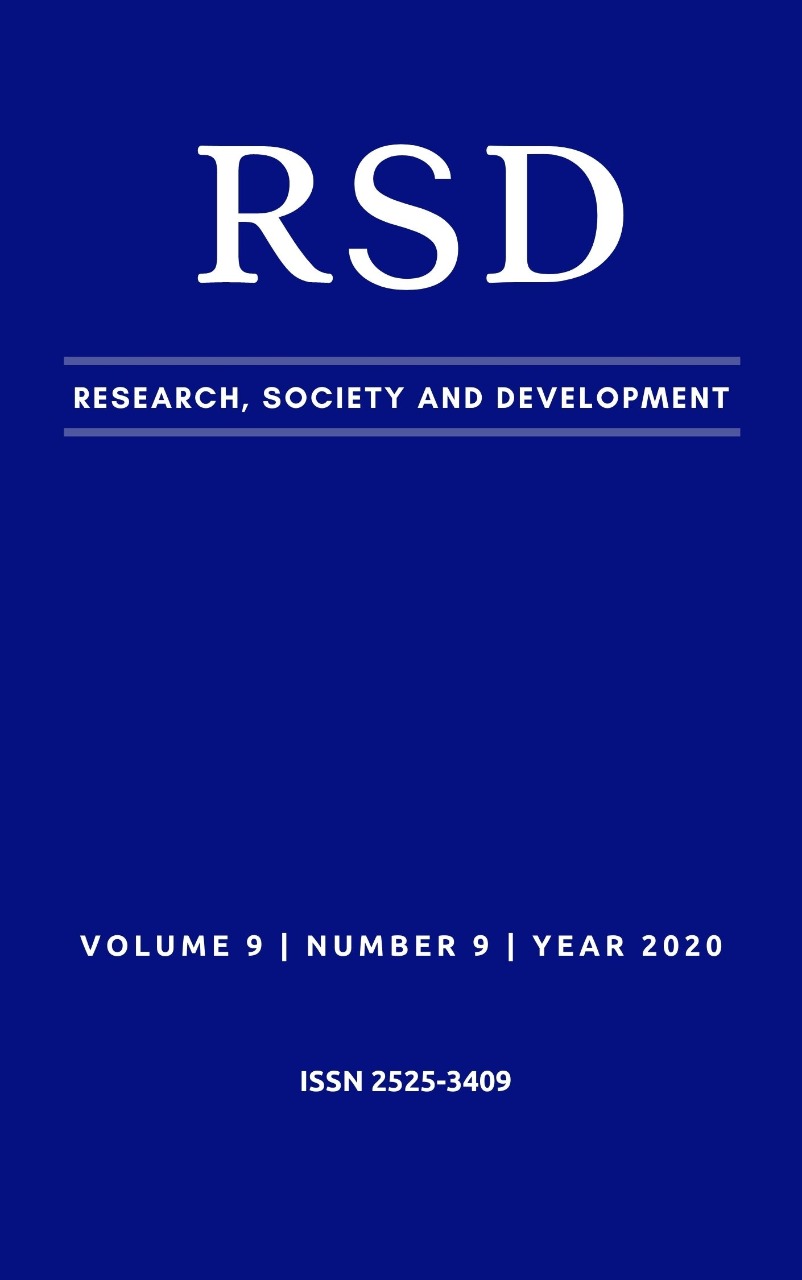A didactic sequence from a gamification application for reading the status of children and adolescents: an active methodology
DOI:
https://doi.org/10.33448/rsd-v9i9.7412Keywords:
Ict; Kahoot; Quiz; Reading; Teaching.Abstract
Information and Communication Technologies - ICTs have become important allies in teaching and learning and, in order to implement them, schools and teachers need to review their practices and look at their students as individual beings, perceiving them as understanding the languages of games, because playing is in your daily life. However, for best results, such tools cannot be run mechanically. He needs to receive from the teacher the interference of an active methodology to enrich him. Thinking about the Brazilian school today leads Education scholars to the following question: can a game be a student-centered work proposal for a collaborative posture and perception of its otherness? Question that leads to the objective of building this didactic sequence on the perspective of a methodological approach proposed by Dolz, Noverraz and Schnewly, with the purpose of describing actions that can enhance the elementary school students from the 5th to the 9th year for making critical decisions and expand your perception of collective social actions. Through a gamification application, the quiz, based on the National Common Curricular Base, proposes a qualitative study, with the theme: status of children and adolescents, guided by basic authors: Deterding, Burden, among other theorists. Thus, it is believed that the didactic sequence can be considered a contribution proposal for the school to evolve and motivate its students more, in view of its potential to arouse interest and participation of students, making them more proactive, responsive, developing their multiliteracies.
References
Brasil. (2017). Base Nacional Curricular Comum do Ensino Fundamental. Ministério da Educação. Brasília, DF. Retrieved Jun 10, 2020, from http://basenacionalcomum.mec.gov.br/images/BNCC_EI_EF_110518_versaofinal_site.pdf
Christensen, C.; Horn, M. & Staker, H. (2013, maio). Ensino Híbrido: uma Inovação Disruptiva?. Uma introdução à teoria dos híbridos. Retrieved Jun 10, 2020, from https://porvir.org/wp-content/uploads/2014/08/PT_Is-K-12-blended-learning-disruptive-Final.pdf
Deterding, S.; Dixon, D.; Khaled, R.; Nacke, L. Gamification: Toward a definition. (2011). Retrieved Mai 11, 2020, from http://gamification-research.org/wp-content/uploads/2011/04/02-Deterding-Khaled-Nacke-Dixon.pdf
Dicio. Dicionário Online de Português. (2020). Semiótico. Semiótica. Porto:7Graus. Retrieved Mai 22, 2020, from https://www.dicio.com.br/semiotico/. https://www.dicio.com.br/semiotica/.
Dionísio, A. P. (2011). Gêneros Textuais e Multimodalidade. In: Karwoski, A. M.; Gaydeczka, B.; Brito, K. S. (Org.). Gêneros textuais: reflexões e ensino. São Paulo: Parábola Editorial.
Dolz, J. Schneuwly, B. (2004). Gêneros orais e escritos na escola. Campinas: Mercado de Letras.
Fadel, L.M.; Ulbricht, V. R.; Batista, C.; Vanzin, T. (2014). Gamificação na educação. Org. São Paulo: Pimenta Cultural. Retrieved Jul 1, 2020, from https://12a44a16-333b-2afc-4c09-a9f4ce61c300.filesusr.com/ugd/143639_bc905418dc92488ba0910561daa9afac.pdf
Fardo, M. L. (2013, Julho). A gamificação aplicada em ambientes de aprendizagem. Retrieved Mai 22 , 2020, from https://seer.ufrgs.br/renote/article/view/41629/26409.
Ferreira, LA. (2010). Leitura e Persuasão: princípios da análise retórica. São Paulo: Editora Contexto.
Fortunato, I.; Teichner, O. T. (2017). Gamificação aplicada ao plano de aula: elementos para potencializar o ensino. Mossoró, Revista Eletrônica Científica Ensino Interdisciplinar - RECEI. Retrieved Mai 22, 2020, from http://webcache.googleusercontent.com/search?q=cache:2ZlMq9IFmy0J:periodicos.uern.br/index.php/RECEI/article/download/2431/1377+&cd=1&hl=pt-BR&ct=clnk&gl=br.
Freire, P. (1992). Extensão ou Comunicação? São Paulo: Paz e Terra.
Hall, S. (2014). A identidade cultural na pós-modernidade. Editora Lamparina.
Kleiman, A. (2011). Leitura: ensino e pesquisa. São Paulo: Pontes Editores.
Koch, I.V. (2002). Desvendando os segredos do texto – São Paulo: Cortez.
Novak, J. D.; Gowin, D. B. (1999). Aprender a aprender. 2. ed. Lisboa: Plátano Edições Técnicas.
Pereira A.S. et al. (2018). Retrieved Jul 7, 2020. https://repositorio.ufsm.br/bitstream/handle/1/15824/Lic_Computacao_Metodologia-Pesquisa-Cientifica.pdf?sequence=1.
Rogers, C. (1973). Liberdade para aprender. Belo Horizonte: Ed. Interlivros.
Downloads
Published
How to Cite
Issue
Section
License
Copyright (c) 2020 Lissandra Esnarriaga de Freitas; Lucy Azevedo Ferreira

This work is licensed under a Creative Commons Attribution 4.0 International License.
Authors who publish with this journal agree to the following terms:
1) Authors retain copyright and grant the journal right of first publication with the work simultaneously licensed under a Creative Commons Attribution License that allows others to share the work with an acknowledgement of the work's authorship and initial publication in this journal.
2) Authors are able to enter into separate, additional contractual arrangements for the non-exclusive distribution of the journal's published version of the work (e.g., post it to an institutional repository or publish it in a book), with an acknowledgement of its initial publication in this journal.
3) Authors are permitted and encouraged to post their work online (e.g., in institutional repositories or on their website) prior to and during the submission process, as it can lead to productive exchanges, as well as earlier and greater citation of published work.

